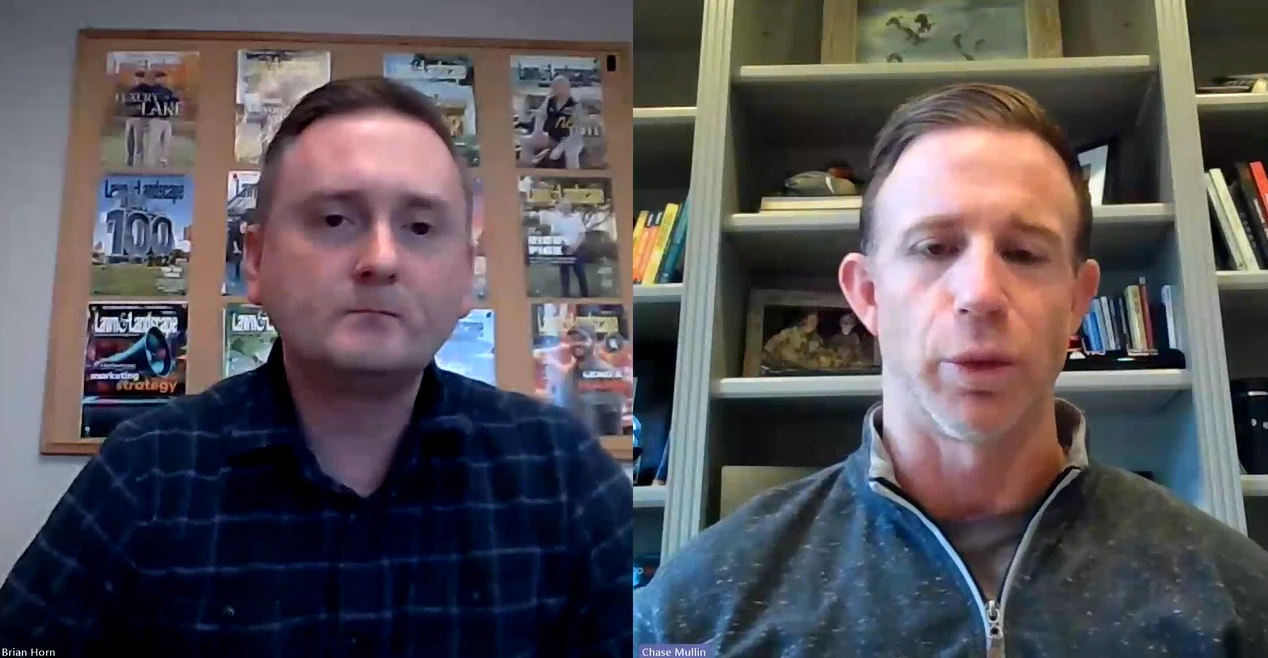
.jpg)
Chris Varvares, senior managing director and co-founder of Macroeconomic Advisers, and Steve Latin-Kasper, NTEA director of marketing data and research talk between sessions at the Business and Market Planning Summit.
DEARBORN, Mich. – Muddled. It’s a perfect word to describe the mess and chaos the uncertain economy has created for companies and consumers for too many years now.
The bad news is the economy is still sick and muddling, says Chris Varvares, senior managing director and co-founder of St. Louis-based Macroeconomic Advisers.
The good news, Varvares says, is the economy is on the right track for growth and unequivocal sings of progress should be seen and felt in nearing months.
“What’s happened today is it’s almost as if the global economy is on a knife’s edge,” he says. “We’re fine as long as we stay on the path we’re on.”
Varvares, whose bio also includes previous member of the president’s council of economic advisers (1981-1982), former president and director of the National Association for Business Economics and a serving member of TIME Magazine’s Board of Economists, led off NTEA’s Business and Market Planning Summit Monday with a macro view of the U.S. economy.
So, what does Varvares predict? Here are some of the important numbers.
Varvares says the economy will continue to slug through the rest of 2012. Gross Domestic Product will end up somewhere between 1.5 percent and 2 percent this year and will quickly pick up and rise to 3 percent in 2013 and 3.5 percent in 2014. GDP hit 4 percent for one quarter about a year ago but has hovered under the 3 percent mark since the recession.
Inflation will stabilize, slowly rise to 2 percent and stabilize again, Varvares says. By remaining low and constant, the inflation rate will help companies and consumers better plan for the future.
Unemployment will continue to decline from 8.3 percent at the end of 2012 to 7.9 at the end of 2013 to 7.5 in 2014. “When we hear those unemployment numbers and they remain very high, it’s depressing,” he says. “It’s one of those things that does impact consumer confidence and impacts spending.”
What does this mean for businesses and individuals? There are multiple market assumptions that lead to the growth. Here are a few.
When it comes to fiscal policy, Varvares says the payroll tax and the emergency unemployment benefits will probably expire in 2013. However, the tax cuts put in place by the last two administrations will remain through 2013.
Home prices are expected to increase 4.9 percent this year, before continuing to grow by at least 2 percent in the coming years. This is the best housing news in half a dozen years, Varvares says.
In the short term, oil prices are expected to rise through 2012 then fall through 2014. Varvares says keep an eye on natural gas as part of the energy equation. With the recent amounts of shale gas found, natural gas prices will decrease and help maintain oil prices.
What’s holding up the growth until 2013? Varvares continues to hear from clients that they don’t want to spend money because of the uncertainty that surrounds Europe and the upcoming presidential election. It’s the lack of commercial and consumer spending, though, that businesses should be concerned with.
The European Central Bank recently instated a bond-buying plan to ease the financial tensions of struggling countries. That policy lifts the cloud of uncertainty that has hovered over the Eurozone, Varvares says.
As far as our national election and any possibility of another recession, he says he doubts it. “(Economists) fundamental view is the government can’t be that stupid to let us go over the fiscal cliff,” he says, receiving a room full of somewhat doubtful laughter. “It’s hard to be an optimist,” he added.
Varvares doesn’t think any major fiscal changes will be made soon, and he certainly doesn’t expect any decisions before the election. What he has noticed is a slow release of pent-up demand from businesses and households when it comes to spending and banks loosening their grip on commercial investor and real estate loans. That’s where businesses should be focusing, he says.
“The risk aversion now is really holding up the economy,” he says. “If we can help clear up the uncertainty and get back to normal risk taking activity that drives economic growth, we’ll be in much better shape.”
NTEA’s Business and Market Planning Summit kicked off the 2012 Truck Product Conference held today through Thursday in Dearborn. The conference provides attendees a preview of the latest trucks and chassis products. Manufacturers on hand at this year’s conference include Isuzu, RAM, Mitsubishi Fuso, Chevrolet & GMC, Hino and Ford.
Get curated news on YOUR industry.
Enter your email to receive our newsletters.Latest from Lawn & Landscape
- Visterra Landscape Group acquires Cleveland-based H&M Landscaping
- SiteOne names Carrothers VP of agronomic business development
- Batman and business
- Ever-changing landscape of SEO
- Fleetio acquires Auto Integrate, raises $450M in Series D funding
- Davey Tree expands in St. Paul, promotes Ostlie to district manager
- Schill Grounds Management taps 3 for senior leadership roles
- HD Hyundai Construction Equipment North America adds to wheeled excavator lineup






